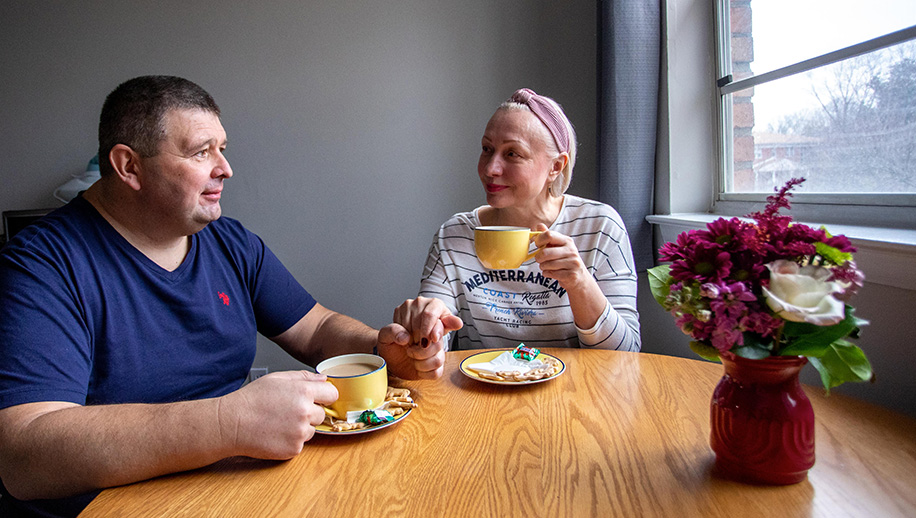The browser you are using is not supported. Please consider using a modern browser.
How Resettlement Works
Understanding the Long Welcome
Our refugee resettlement work starts before a refugee arrives in the United States, ensuring individuals and families find a safe and soft place to land.
Step One: Finding the Right Fit for Refugees
Refugee resettlement refers to the process of helping refugees move to a new country that has agreed to take them in and grant them permanent residence.
When a refugee is identified for resettlement in the U.S. — and before their flight is arranged — Global Refuge sits down with our refugee resettlement agency peers to determine the best city and partner for each case.
During this process, Global Refuge experts take into account the refugee’s country of origin, the language they speak, where in the country they might have family members, and other important factors such as physical disabilities or mental health needs. Based on this information, Global Refuge and the other refugee resettlement agencies will identify which of our collective network partners is best equipped to support each individual or family.
One of our partners, for example, is located in a city with a robust community of Bhutanese refugees. Because of the cultural support there — and the fact that local partner staff speak the language — Global Refuge might decide to resettle a new refugee case from Bhutan at that location.
Step Two: From the Airport to Self-sufficiency
At the airport, refugees are greeted by Global Refuge refugee resettlement partner staff and brought to a home or apartment that has been prepared for them in advance–stocked with modest furniture, culturally familiar foods, and all of the basic amenities of an American home.
Over the course of the next few months, case managers support the individual or family in learning to navigate their new community. Adults are enrolled in English language classes, children are enrolled in school, and Global Refuge partners guide the refugee(s) in using public transportation and accessing community resources. They are introduced to new neighbors and church and community groups that will play an important role in providing each refugee with support and companionship for years to come.
Case managers support refugees in learning financial literacy and help them find a job or vocational calling that will be a stepping stone towards self-sufficiency.
Step Three: The Empowered Living Experience
At Global Refuge, we believe we must go beyond the basics to help refugees not simply survive, but thrive in the United States. Our suite of innovative programming continues to support and walk alongside New Americans to support employment, enrichment, and integration. Learn more.

Spotlight: Cultural Orientation
Soon after their arrival in the U.S., refugees are put through cultural orientation — a set of informal and formal training that helps them adjust to cultural norms and new situations. During this time, refugees will learn everything from U.S. laws to employer expectations and banking and finance.